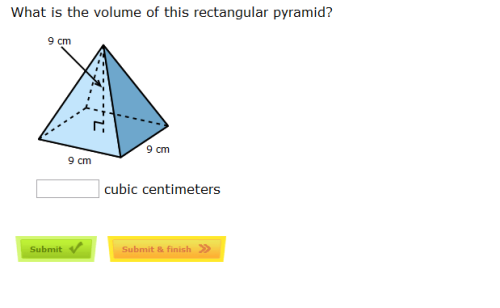
Federal financial aid can only be applied for by students with a degree. You must be at least half-time in a degree-granting college to qualify. For continuing students, you must meet certain academic requirements called SAP requirements. These criteria vary by school but may include a minimum GPA, required course credits, and timeline for earning a degree. Financial information must be provided for parents to be eligible for financial aid.
Undocumented students are not eligible for federal student aid
There are several financial aid opportunities available for undocumented students, including state-based aid, institutional grants, and private scholarships. Undocumented students are not eligible for federal student aid, but may be eligible for state-based aid. Depending on your situation, you may qualify for both need-based and merit-based aid. For state-based assistance, fill out the FAFSA and discuss your situation with your guidance counselor at high school or college's financial office.

Scholarships are available to undocumented students through state- and local programs. Some scholarships offered by state do not require citizenship. Check with your college to confirm if they accept students with DACA/TPS. State-based financial aid is possible for undocumented student if parents are American citizens.
For calculating financial need, use untaxed income records
Use the Penn Net price calculator to find out how much you have available for college. This calculator, sponsored by the College Board, is an online tool that estimates a student’s net price. You will need your student's and parent's tax returns, bank statements, investment statements, as well as records of untaxed income, to use this calculator.
Non-need-based aid is essentially federal student loan
While need-based aid is a great way to finance your education, it can also help students with less-traditional backgrounds. Federal grants and scholarships are non-need-based. A non-need-based program may be a great option for you if there are special talents or experiences. These funds are not limited to traditional students, so don't be shy about listing them!

Non-needbased aid is the type you won't need to repay. These funds are determined by your COA (cost-of-attendance) and your family's financial contributions. Your financial need may be greater than your COA (cost-of-attendance) but this does not mean you can't get more need-based aid. Your COA will dictate the amount of need based aid you get.
FAQ
How much money does a teacher make in early childhood education? (earning potential)
The median salary for early childhood teachers is $45,000 per calendar year.
However, there are areas where salaries tend to be higher than average. Teachers in large urban schools receive higher salaries than teachers in rural schools.
Salaries are also affected by factors like the size of the district and whether or not a teacher holds a master's degree or doctorate.
Teachers start off making less money than other college graduates simply because they don’t have much experience. Teachers can see a dramatic increase in their income over time.
How do I select my major?
Students choose their majors according to their interests. Some students will choose to major or minor in a subject that interests them because they'll find it more enjoyable than learning about something else. Some students want to go into a field where there is no job. Others decide to major because they want to earn money while studying. Whatever your reasons, you should consider what kind of job you might like after graduation.
There are many ways to get information about different fields of study. You could talk to someone in your family or friends about their experiences in these areas. Read magazines and newspapers to see if there are any careers listed. Ask your guidance counselor about possible career options. Visit the Career Services section of your local library. Check out books on various topics from your public library. You can search the Internet for information about specific careers.
What are the various types of early childhood education available?
There are many ways to explain early childhood education. The most common are:
-
Preschool - Children ages 2 to 5
-
PreKindergarten – Children aged 4-6
-
Head Start/ Headstart for children ages 0-3
-
Day Care/ Daycares- Children aged 0-5
-
Child Care Centers for Children from 0-18
-
Family Child Care – Children aged 0-12
-
Home Schooling - Children ages KG to 16
How do you get scholarships?
Scholarships are grants awarded to help pay for college expenses. There are many kinds of scholarships. There are many types of scholarships available.
-
Federal Grants
-
State Grants
-
Student Loans
-
Programs for Work Study
-
Financial Aid
Federal grants are made directly by the U.S. government. Federal grants are subject to certain conditions. To demonstrate financial need, applicants must meet certain requirements.
State grants are offered by individual states. Some states offer state grants based only on financial need. Other states award money for specific reasons.
Banks and other lending institutions can issue student loans. Students borrow money to pay tuition and other living expenses.
Employers are encouraged to employ qualified students through work-study programs. Employers are required to pay employees at least minimum wage.
Financial aid helps low-income families afford college by covering most or all tuition costs.
Statistics
- “Children of homeowners are 116% more likely to graduate from college than children of renters of the same age, race, and income. (habitatbroward.org)
- And, within ten years of graduation, 44.1 percent of 1993 humanities graduates had written to public officials, compared to 30.1 percent of STEM majors. (bostonreview.net)
- Think of the rhetorical power of nineteenth-century abolitionist Harriet Beecher Stowe, Martin Luther King, Jr., or Occupy Wall Street activists with their rallying cry of “we are the 99 percent.” (bostonreview.net)
- Data from the Department of Education reveal that, among 2008 college graduates, 92.8 percent of humanities majors have voted at least once since finishing school. (bostonreview.net)
- Among STEM majors, that number is 83.5 percent. (bostonreview.net)
External Links
How To
What is vocational training?
Vocational Education, which is an educational system that prepares high school students for jobs after college or high school, provides them with training in specific skills required for a job (e.g. welding). Vocational Education also offers apprenticeship programs that provide on-the-job training. Vocational education stands out from general education. This is because it focuses less on general knowledge and more on developing skills for specific occupations. Vocational education does not prepare students for university, but it helps them find work after graduation.
Vocational education may be provided at all levels of schooling, including primary schools, secondary schools, colleges, universities, technical institutes, trade schools, community colleges, junior colleges, and four-year institutions. There are also many specialty schools like nursing schools and law schools, legal schools, medical schools and dental schools as well as veterinary medicine, veterinary medicine, firefighting, police academies and military academies. These schools offer both practical and academic training.
In recent decades, many countries have made large investments in vocational training. The effectiveness of vocational training is still a controversial topic. Some critics argue that it does little to improve students' employability; others argue that it provides useful preparation for life after school.
The U.S. Bureau of Labor Statistics estimates that 47% of American adults possess a postsecondary certificate, or degree related to current occupation. This number is higher for those with higher education. 71% of 25-29-year-olds have a bachelor's or higher degree and are employed in areas that require postsecondary credentials.
According to the BLS in 2012, almost half of Americans had at the least one type of postsecondary credential. About one-third of Americans held a two-year associate degree, while about 10 percent held a four-year bachelor's degree. One out of five Americans held a master's degree or doctorate.
The median annual wage of a bachelor's degree holder was $50,900 in 2013, compared with $23,800 for someone without one. For advanced degrees, the median annual wage was $81,300.
The median income for those who have not completed high school was just $15,200. A person with a lower high school diploma earned $13,000 annually.